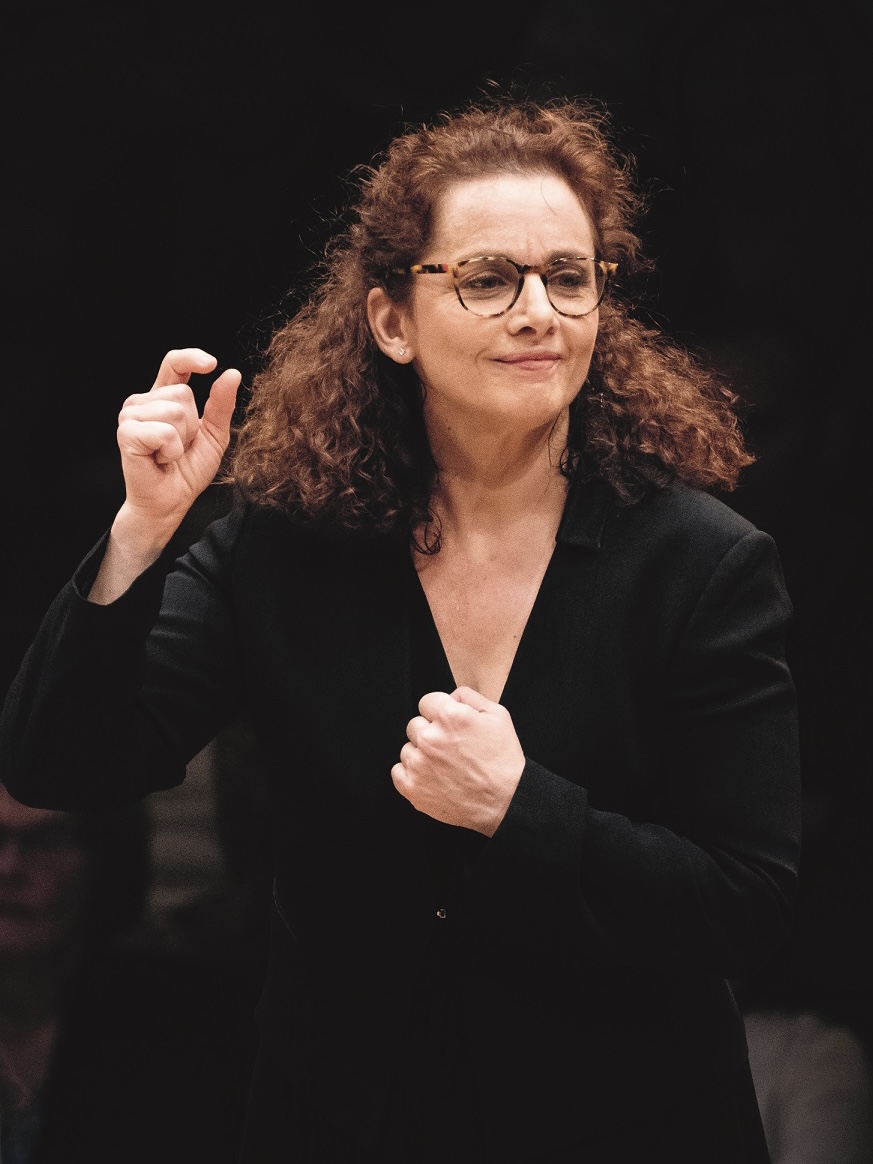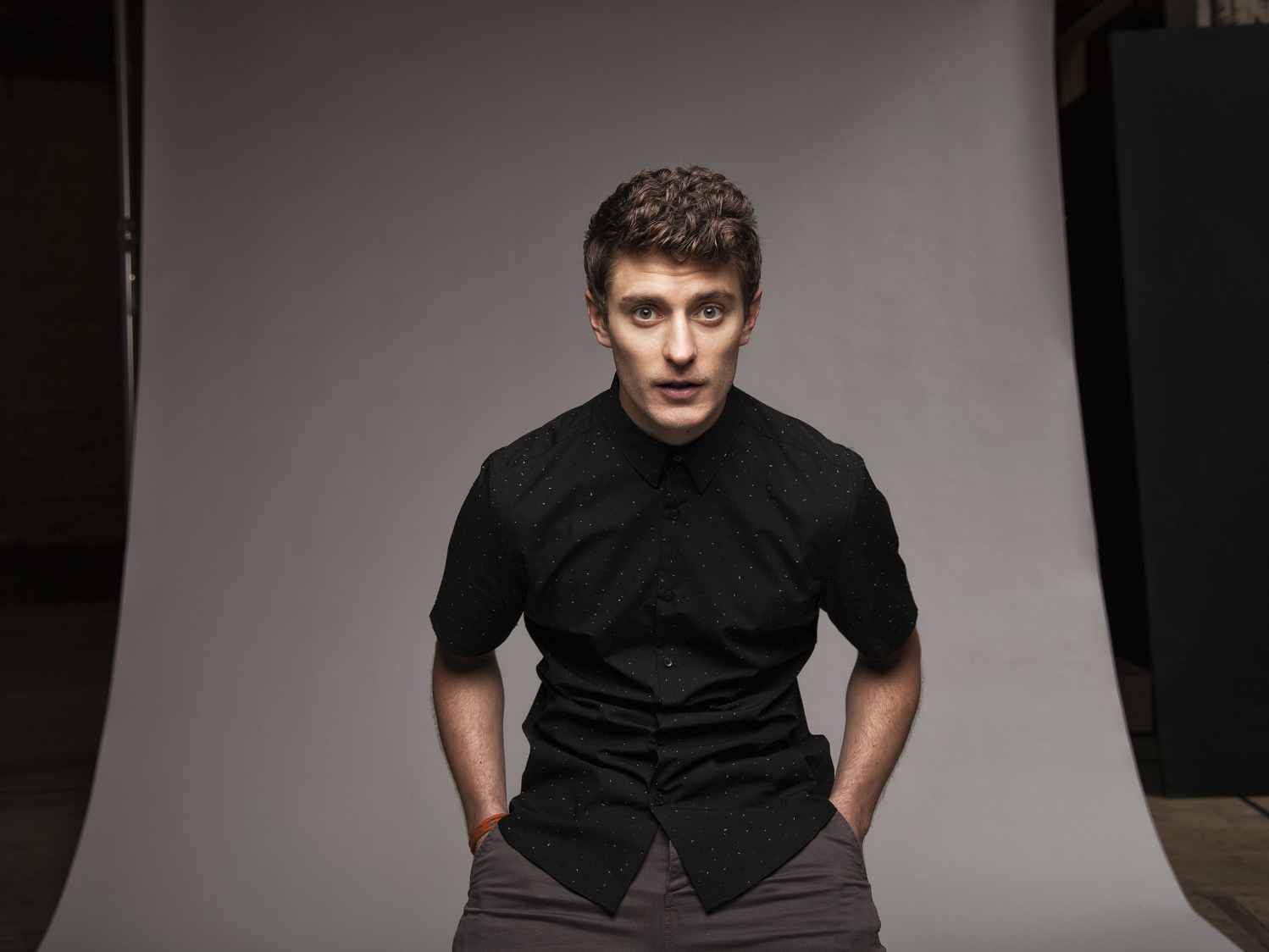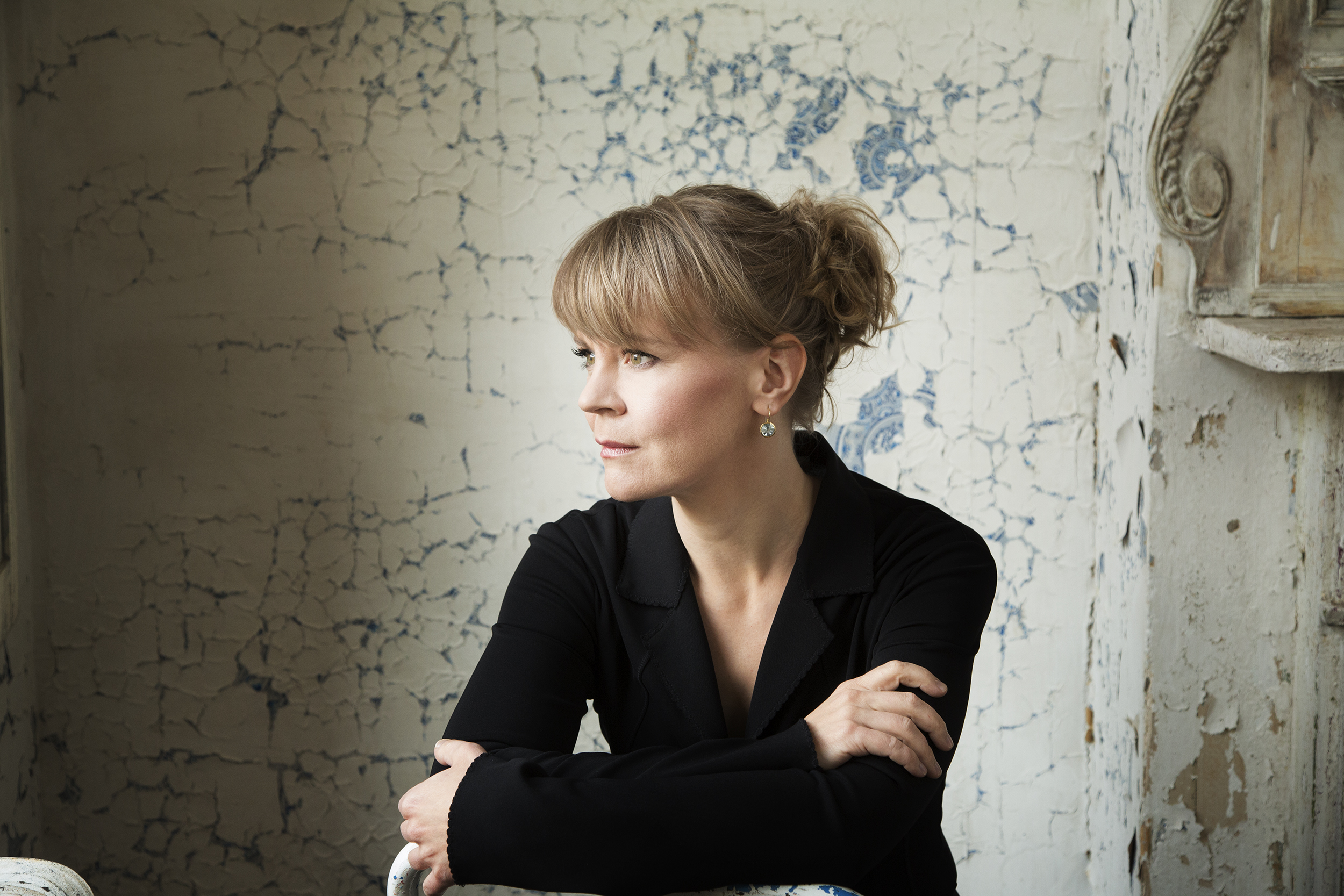- Portrait

The conductor and harpsichordist Emmanuelle Haïm is one of the leading protagonists of early music. Portrait of a baroque icon.
Emmanuelle Haïm always dreamt of pursuing a career as a conductor. The fact this the profession was dominated by men struck her as neither important nor interesting – as she explains, it was not until later that she noticed that there was a difference, however small, between her and most of her male colleagues. She achieved this aim in life by a somewhat circuitous route and yet there was an inner logic to her journey, a logic inseparable from her specialization in the field of Baroque music.
Today Emmanuelle Haïm is one of the world’s leading representatives of historically informed performance practice, not only enjoying immense success with her ensemble Le Concert d’Astrée but also working with large modern symphony orchestras that are more than happy to draw on her expertise and energetic musicianship. In March she is conducting the Berliner Philharmoniker in Handel’s early oratorio Il trionfo del Tempo e del Disinganno, her sixth appearance with the orchestra – not counting those occasions when she has sat at the heart of the orchestra, playing the harpsichord or the organ and providing the continuo and, with it, the music’s bass line.
Beginnings in Paris
Emmanuelle Haïm was born in Paris in 1962. Her first piano teacher was her aunt, who soon handed her over to a friend of hers, the then seventy-year-old Yvonne Lefébure, who was already a living legend among French keyboard teachers: her pupils belonged to a much older generation of keyboard players.
Even Emmanuelle Haïm’s aunt had already inculcated in her a love of Baroque music thanks to her own particular fondness for the music of the French clavecinistes such as François Couperin and Jean-Philippe Rameau. But she also played the keyboard works of Johann Sebastian Bach, to whom her highly gifted niece was especially drawn: “I found everything in these works – splendour, rhythm, harmony, form.
His music wakened all my senses.” Emmanuelle Haïm studied with Yvonne Lefébure at the Paris Conservatoire and by the time that she graduated she had learnt to play practically every keyboard instrument from the piano and organ to the harpsichord, for which her teachers were Kenneth Gilbert and Christophe Rousset. She also studied continuo playing. Although she won many prizes and awards in the examinations that she sat, she decided against embarking on a career as a soloist. Christophe Rousset, who is only a year older than she is and who taught her much of what she knows about continuo playing, convinced her that she should follow in his own footsteps and study with William Christie, who remains one of the greatest musicians associated with the rediscovery of the world of French Baroque music.
An important mentor
Christie was born in New York but relocated to Paris in 1971, when he was not yet twenty-seven years old. And it was in Paris that he founded his ensemble Les Arts Florissants in 1979. Although historically informed performance practice was well established at this time in Germany, Austria and the Benelux countries, it would be no exaggeration to say that it was only with Christie and Les Arts Florissants that it really caught on in France. Admittedly, the Belgian conductor Philippe Herreweghe had founded his Chapelle Royale in Paris two years earlier, but Christie was more successful in convincing not just the general public but critics, too, of the vitality and uniqueness of the music of Rameau, Charpentier, Couperin and others.
Thanks to his gifts as a teacher, Les Arts Florissants became the springboard for many careers, more especially singers but also musicians who went on to form their own ensembles. Marc Minkowski had played the bassoon under Christie before going on to found and run Les Musiciens du Louvre, while Rousset played the harpsichord with Les Arts Florissants before founding Les Talens Lyriques. For his part, Hervé Niquet, who had trained as a continuo player and choral conductor, sang in Christie’s choir before founding Le Concert Spirituel. Last but not least, Emmanuelle Haïm worked with Christie before forming Le Concert d’Astrée in 2002.
Conducting with charm
It is no accident that it is above all continuo players who have gone on to form their own ensembles. Nowadays almost every performance of a piece of Baroque music is led by a conductor, but during the Age of Baroque such works were led from the harpsichord or organ. The continuo group provides the work with its musical foundations: not just the bass line but also the harmonies. As a result many continuo players perform from the full score in order to gain a comprehensive overview of the overall musical context. In turn this means that it is but a small step from continuo player to conductor. Indeed, many of the music directors of today’s ensembles who take their cue from historically informed performance practice conduct from the harpsichord, the continuo group offering a better vantage point than the position of the leader of the first violins when it comes to directing this music.
Emmanuelle Haïm made a name for herself with Les Arts Florissants not just as a continuo player but also as a répétiteur, in which capacity she rehearsed with the singers. Essentially, then, she was already operating like a conductor in the theatre. It was Sir Simon Rattle who provided her with the impulse that she needed to revive her original dream of becoming a conductor.
In 1999 he conducted Rameau’s opéra-ballet Les Boréades at the Salzburg Festival with the Orchestra of the Age of Enlightenment and had approached William Christie to ask him for his advice on a suitable harpsichordist. Christie recommended Emmanuelle Haïm. For her Rattle embodied her vision of the ideal conductor, a figure who imposed his will not by means of his dictatorial authority but through his charm and, above all, through his ability to communicate his own pleasure in the music.
Concert excerpt: Music for the Royal Fireworks, HWV 351
Emotional incendiarism
It is enough to watch Emmanuelle Haïm playing the harpsichord to appreciate her gifts. Readers may still recall her contribution to Rattle’s St John Passion in the Berlin Philharmonie in 2014. Her lithe physicality reflects her musical input with its commitment and individuality invariably placed in the service of a higher cause.
“It’s never enough, it can never be too much,” Emmanuelle Haïm once defined her relationship with the score’s expressive language. Indeed, it was presumably this that has led journalists to dub her “Ms Dynamite”, a label she herself finds embarrassing not least because it fails to recognize that with her, making music is not just about emotional incendiarism but also about formal balance and a sense of swing – the same quality that both Rattle and Christie bring to the podium, albeit in their very different ways.
French Baroque music is a world unto itself: its rhythms are subtly differentiated as a result of their origins in dance, while its harmonies are organized along highly rational lines, its notation relatively abstract with numerous ornaments designed to breathe life into the simplest of melodic forms – assuming that the performers know how to deal with these embellishments. This style is second nature to Emmanuelle Haïm, allowing her to develop her feel for a melodically inspired delivery over a framework sustained by its rhythms. It has also informed her thrilling ability to phrase the music in expressive and meaningful ways.
It is enough to listen to her recording of Monteverdi’s L’Orfeo to hear how she succeeds in discovering rhythmically striking forms in the monodic writing, which is otherwise declaimed in a rhythmically free manner. Her phrasing allows listeners to gain an unusually clear insight into the music’s structure – there are recordings that may appear to be even more extreme in terms of their expression but which are structurally incoherent in consequence. Under Emmanuelle Haïm’s direction listeners are able to form a better understanding of these works and in that way learn more about their expression, which cannot be separated from their form.
Singers determined to live this music with uninhibited abandon will receive little encouragement from her, whereas those who embrace her work with them know that she will create a framework within which they can bring out all of their qualities to the very finest effect. Her relations with her singers are close and friendly and based on genuine loyalty. These singers include some of the leading names in their field: Natalie Dessay, Sabine Devieilhe, Lea Desandre, Sonia Prina, Philippe Jaroussky and Tim Mead. She has also introduced other singers to Baroque music even though their musical backgrounds have been very different. Here one thinks first and foremost of Joyce DiDonato and Rolando Villazón.
Handel as an affair of the heart
Haïm and Le Concert d’Astrée have enjoyed some of their greatest successes in Handel. A performance of his opera Rodelinda brought them overnight fame, and Handel is the composer whose works dominate her discography from the mighty Giulio Cesare to the charming Aci, Galatea e Polifemo and from the early oratorio La Resurrezione to the universally popular Messiah. Chamber duets and, most recently, a selection of Italian cantatas represent the more delicate side of Handel’s nature. Her appearances as a conductor with the Berliner Philharmoniker have generally included at least one piece by Handel: she made her debut with his Ode for Saint Cecilia’s Day, later conducting the Water Music and “The Music for the Royal Fireworks” and culminating in the great Italian oratorio for Easter, La Resurrezione.
This season she is conducting Handel’s earliest oratorio, Il trionfo del Tempo e del Disinganno, with the Berliner Philharmoniker. Believed to have been composed in Rome in 1707, it tells an allegorical tale involving a battle between Pleasure (Piacere), Time (Tempo) and Disillusion (Disinganno), who argue over Beauty (Bellezza). Although this may sound boring and sanctimonious, since it ends with Beauty turning her back on fleeting Pleasure and embracing wisdom, Handel’s consistently beautiful and enjoyable music brings a certain degree of scepticism to this moral, turning the piece into a gripping, melodious and sensuous exploration of a very wide range of emotions. The libretto is the work of Handel’s patron Benedetto Pamphili, who appears to have been drawn to the young and attractive German composer not just by his music, and it evidently inspired Handel to introduce himself into the piece in the form of an aria about a “leggiadro giovinetto” (graceful youth) who subverts the senses with his lovely sounds – at the first performance Handel himself created this “suono lusinghiero” (enchanting sound) on the instrument most closely associated with him, the organ, for which he wrote an obbligato part.
When Emmanuelle Haïm recorded this work fifteen years ago, she was heavily pregnant and had additionally broken her right shoulder blade, with the result that she had to record the two lines of the organ part successively with her left hand. Despite this handicap this recording remains a benchmark performance in terms of its vitality, precision and colour, to say nothing of Haïm’s detailed work with her four singers – three women and a man. And so we may look forward to the magic of a live performance, this time with an uninjured Emmanuelle Haïm and with a team of singers made up of one woman and three men.

From Breakdancing to the Baroque
Portrait of the countertenor Jakub Józef Orliński

Klaus Mäkelä, the Man Who Knows No Fear
In April, the Finn Klaus Mäkelä makes his debut with the Berliner Philharmoniker with works by Tchaikovsky and Shostakovich.

A beautiful give and take
Portrait: The conductor Susanna Mälkki